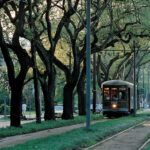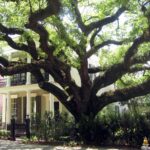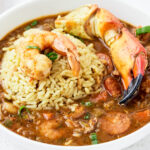Voodoo and Marie Laveau
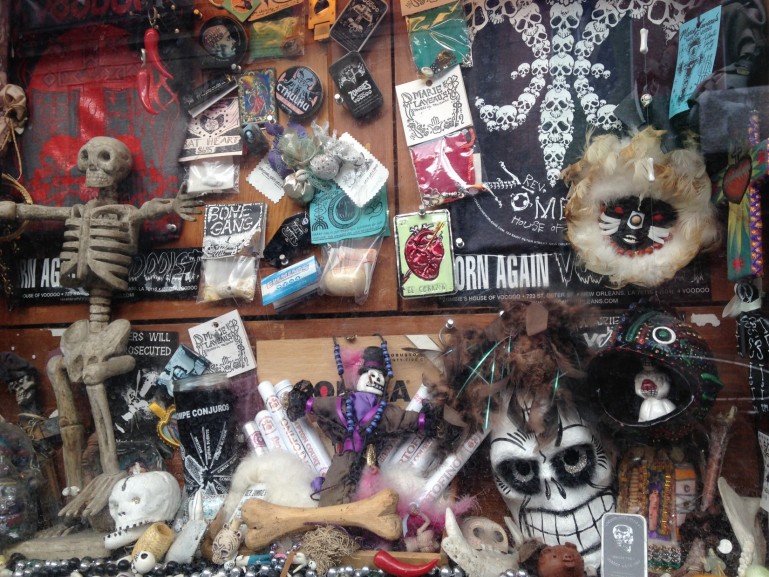
Of the many, many facets of New Orleans culture that is barely known, let alone understood, is the presence of Voodoo. It is exceedingly difficult to lay out exactly what Voodoo is because there are innumerable varieties and practices. Even practitioners attempt to “correct” other versions in their narratives so any research yields conflicting information. And for any outsider to come along to explain things, that explainer gets lots of free lessons on where he or she went wrong.
There are many reasons this much-maligned, very beautiful practice is seen the way it is, but first let’s try to pin down (No pun intended. Well, ok sort of) what Voodoo is.
Mikko Macchione
Tour Guide with Unique NOLA Tours and Author of books about New Orleans.
It starts in West Africa. Before white folks arrived, there existed many strains of monotheistic, nature-worshiping religions. In the early pantheons, there are essences/spirits of natural things like mountains and the ocean. These ‘Orishas’ have dominion over various areas of life: fertility, love, work, etc.
When slaves were stolen from these countries, they kept their faith in their hearts and secretly practiced their rituals. These “African Diasporic” religions evolved in different parts of the New World. This list is far from complete, in fact it’s not even close – Cuba has Santeria and Palo; Jamaica is the center of Obeah; Brazil has dozens including Candomble, Macumba and Umbanda; Trinidad and Tobago has Trinidad Orisha; the American South has Hoodoo (which is NOT Voodoo); and of course Haiti is where Voodoo evolved.
In 1791, Haiti blew up. Toussaint Louverture led an uprising of poor folks against rich folks, and the rich folks lost. Suddenly thousands of French speaking, Catholic and Voodoo practicing people arrived in Catholic/French New Orleans. In the days of slavery, many Haitians lived in the old city, or just outside, with their own black servants and papers that declared them to be “Gen de Couleur Libre,” or Free Person of Color. Voodoo spread through the town – adopted by free people of color, enslaved people and even some white folks.
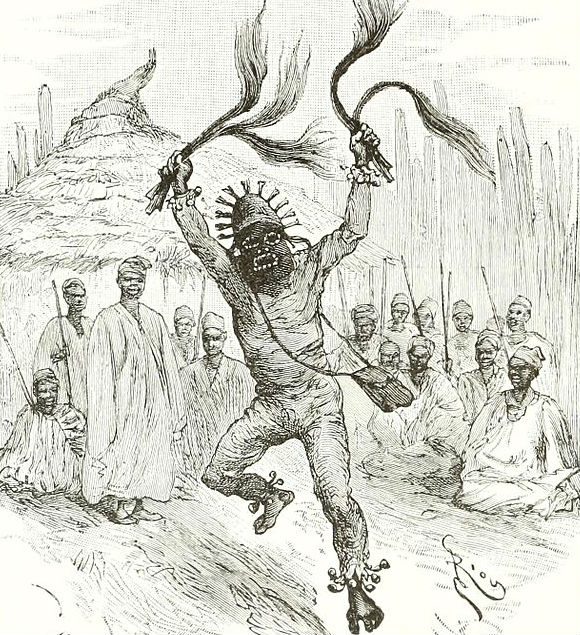
New Orleans Voodoo today is recognized as a proper Voodoo faith in its own right. There was a silly article in a national magazine that recently declared “there are approximately 350 to 400 active practitioners,” in New Orleans today. Man, there are at least twice that many every year in an annual Voodoo drum festival in the French Quarter. It’s hard to give a hard number of the faithful because there is no registry or openly public church. Some folks do all-out ceremonies in their homes or in cemeteries or parks every week or month. Others use Voodoo when they need something like a new job or a new husband and they go to a ‘mambo,’ a priestess, or a ‘houngan,’ a priest, for help. Some folks simply carry a gris-gris, a small cloth bag containing herbs, in their pockets.
The most famous mambo, without a doubt, is the provocative Marie Laveau. She lived in New Orleans in the mid-Nineteenth Century. Her grandmother was a slave, but got her freedom and gave her former master a baby girl. This is Marie’s mother. Marie grew up as Catholic and Voodooine.
Marie had entree into white and black homes. She took the idea of Catholic charity very seriously. “Feed the hungry, house the homeless, care for the sick, visit the imprisoned, bury the dead.”
Her house was at 1020 St Ann, it was demolished in the thirties. That place was a veritable clinic, ladies having babies there, sick people coming over for aid. Marie was an herbalist so she prepared not only medicines and health-enhancing concoctions, she made vital mixtures in the practice of Voodoo. She allowed friends and even strangers to be buried in her family tomb. She owned two tombs in St. Louis Number One Cemetery. The one she is buried in has 78 people. She prayed in Saint Louis Cathedral every Sunday and conducted Voodoo rituals under the full moon at the Lakefront. One story has 2000 people, white and black, attending.
She would go to the jails and bring food and herbal remedies. Often Marie campaigned for the overturning of a death sentence, or the release of wrongly-accused prisoners. Her efforts often succeeded.
She is interred in historic Saint Louis Number One Cemetery in an elegant Greek Revival tomb; other ‘voodoo-ologists’ have claimed to have proved she is in at least two other tombs in the same cemetery. People try to honor Marie to receive help in some way, and when the help arrives, the petitioner leaves hairpins (kinda like a saint-symbol), bottles of rum (always empty these days), and then, for some ridiculous reason, they scratch “XXX” into the tomb.
Today, a much stricter cemetery staff removes the offerings and the X’s from the official tomb, it is an ongoing job; but the other two tombs she supposedly occupies – the so-called ‘faux Leveaux’ – are covered in memorials and X’s.
One of the most unfortunate things to happen to Marie’s image was her national obituary. Locally she was extolled as ‘a saint’ and was recognized for her life of ‘self-abnegation.’ Nationally, though many papers refer to her as ‘beautiful,’ ‘benevolent,’ and ‘wonderful;’ almost all the stories are made up facts and refer to her as the Voodoo Queen in dark and insinuating ways. The New York Times reported she was 98 years old, she passed at 78.
The worst however was her obituary in Harper’s Weekly, which had a history of “exoticizing and demonizing practitioners of Voodoo.” In a totally bogus obituary, festooned with dripping Spanish moss, dark tombs with phantoms swirling, and creepy skulls, she is basically relegated to the position of misguided demagogue. About a century later a pop song was written containing the lyrics
She lives in a swamp in a hollow log
With a one-eyed snake and a three-legged dog
She’s got a bent, bony body and stringy hair
Her treatment is instructive in why Voodoo gets a bad rap in many circles still. Since not much is known to outsiders, and there are vague rumors of curses and hexes, people make stuff up. Moreover, Voodoo appears in hyper-Catholic countries, where anything not in line with the Canon is sinful, demonic and evil.
The worst victim of the centuries of white media anti-voodoo propaganda is the voodoo doll. People think they are a weapon, where it is just the opposite. A voodoo doll is used to channel healing, positive energies to the person it is associated with.
And there are those that double down saying
“But don’t they all curse each other?”
And one could respond,
“You can pray to your God that someone gets in a car accident.”
“Well I would never do that!”
Well shut up, then.
Voodoo is not celebrated in large expensive houses of worship with opulent decorations and silver and gold sacred tools. Voodoo evolved as a poor person’s, worse than poor, an enslaved person’s faith. To this day Voodoo takes place in humble places; instead of stained glass there are carvings; instead of an extravagant censer – a cigar is smoked; instead of wine in a gold chalice – cheap rum is sipped from the bottle.
Today, New Orleans has many places to find out about real Voodoo. There is a humble museum on Dumaine Street, and a block down is Voodoo Authentica, a legit shop. Just outside of the French Quarter is the Island of Salvation Botanica in the Healing Center. There are also shops that serve the communities of Macumba, Hoodoo and Santeria.

